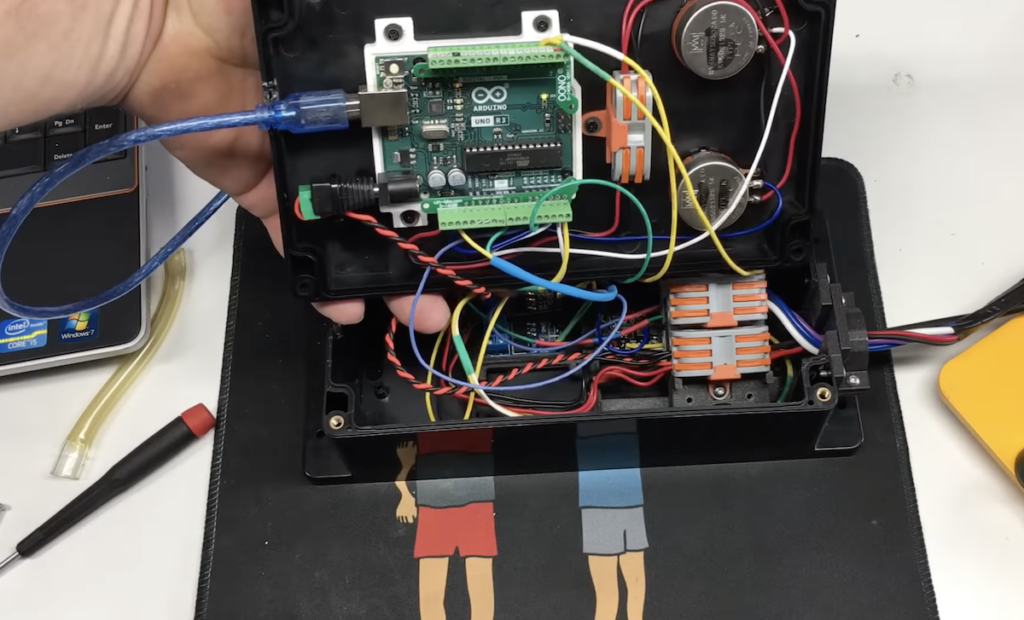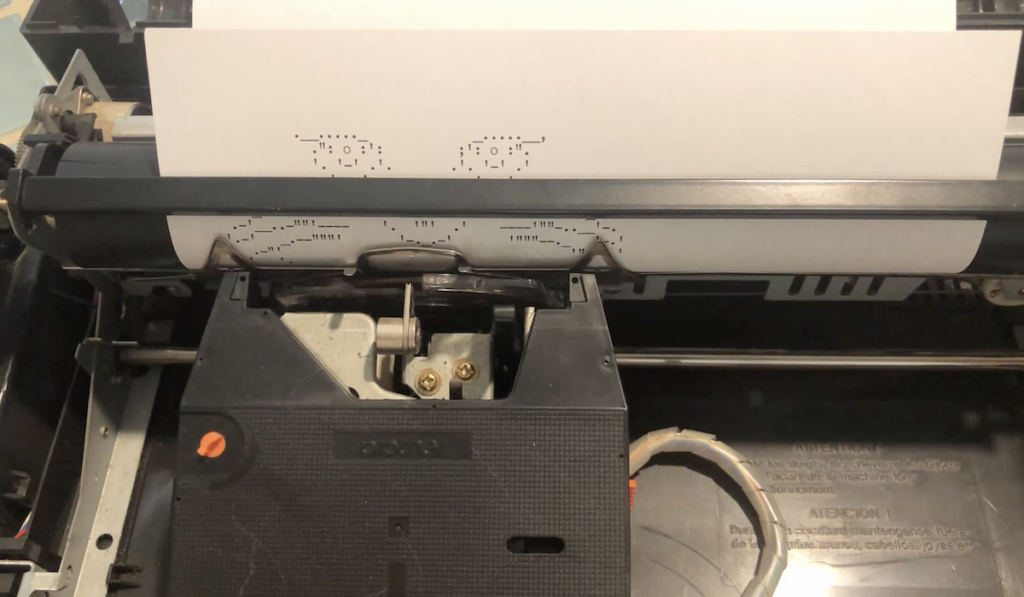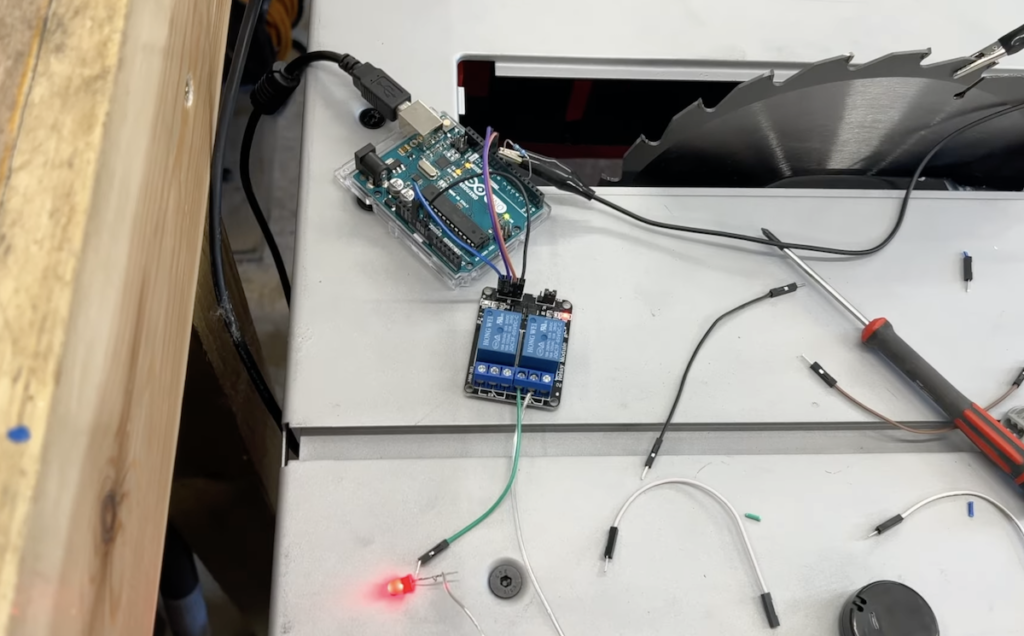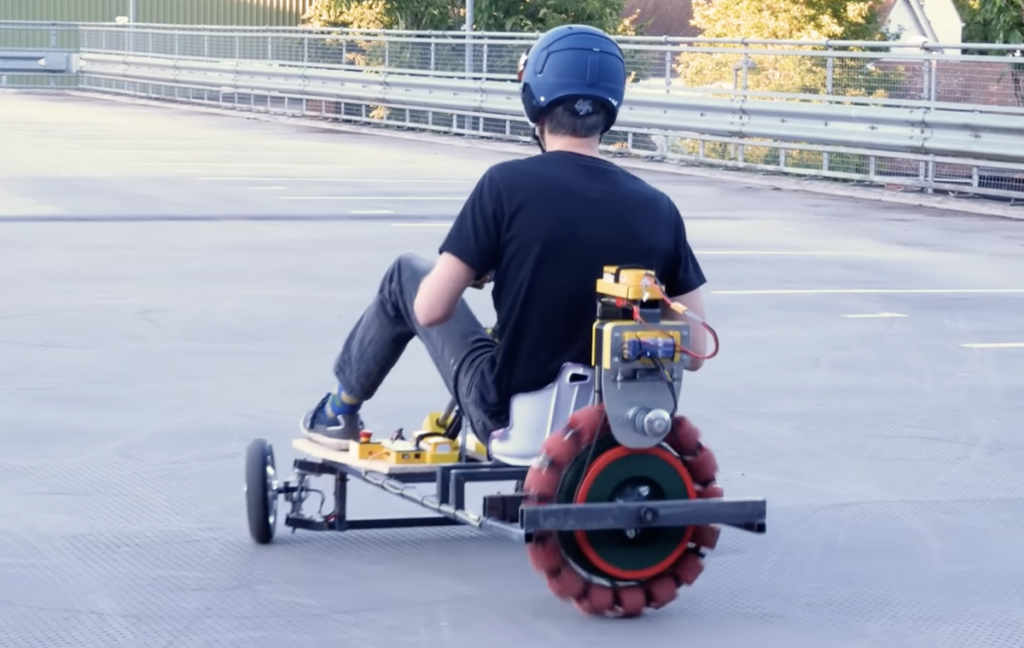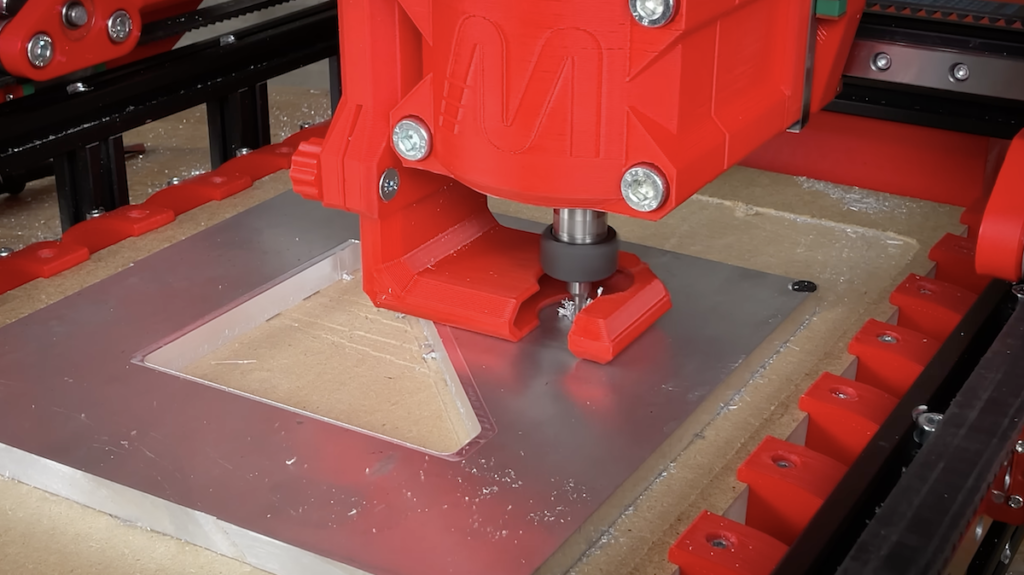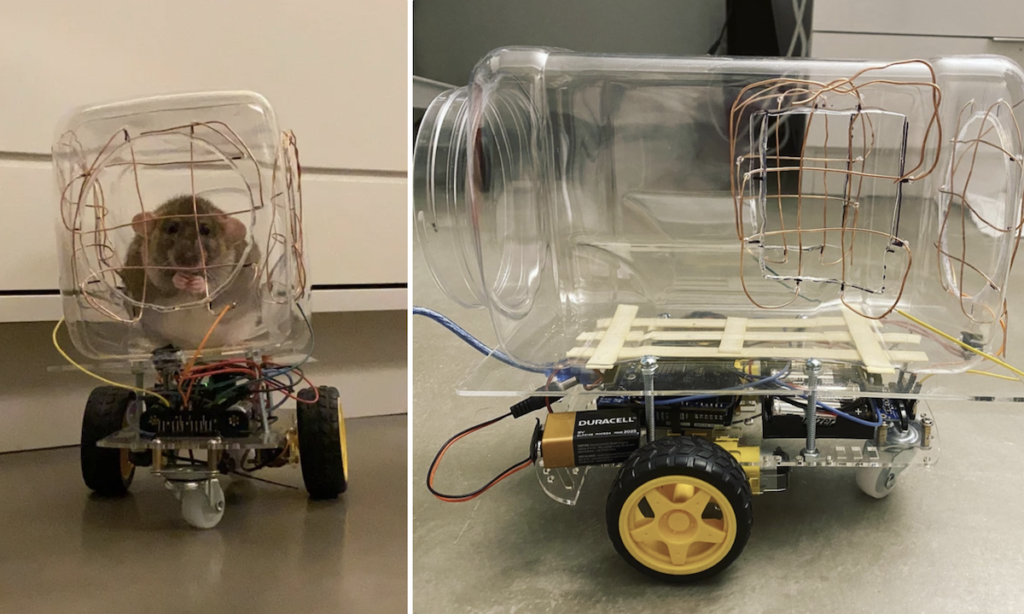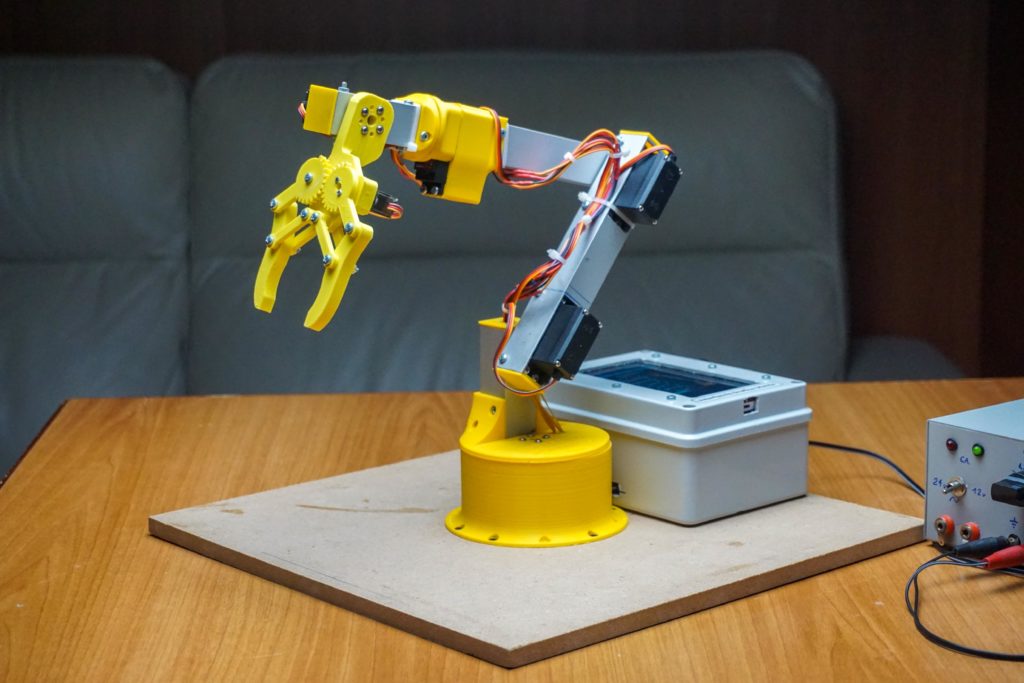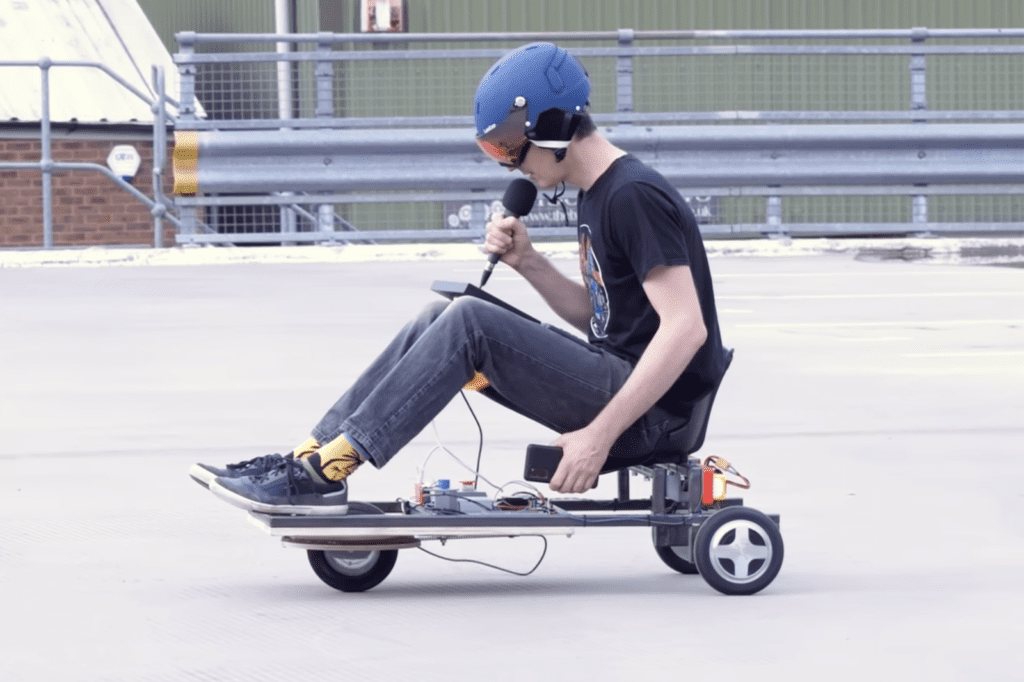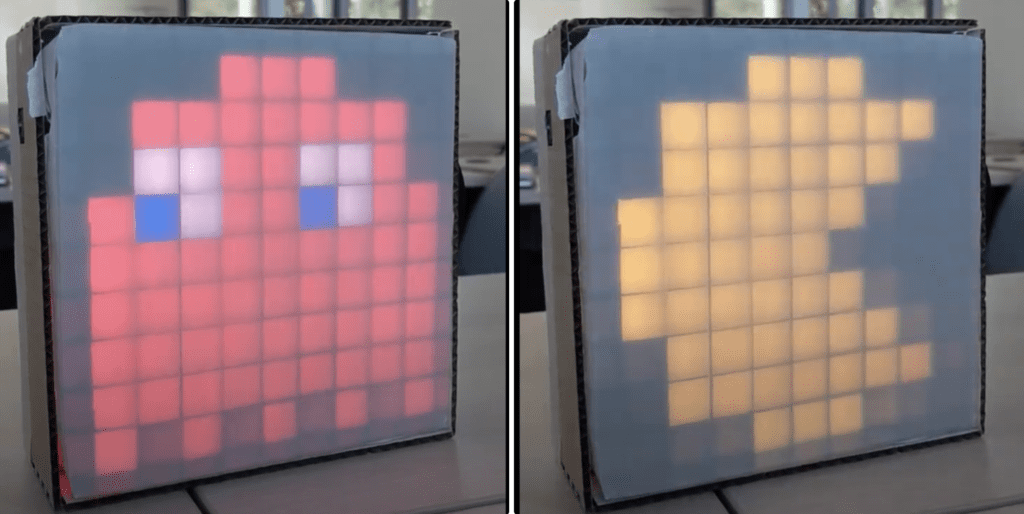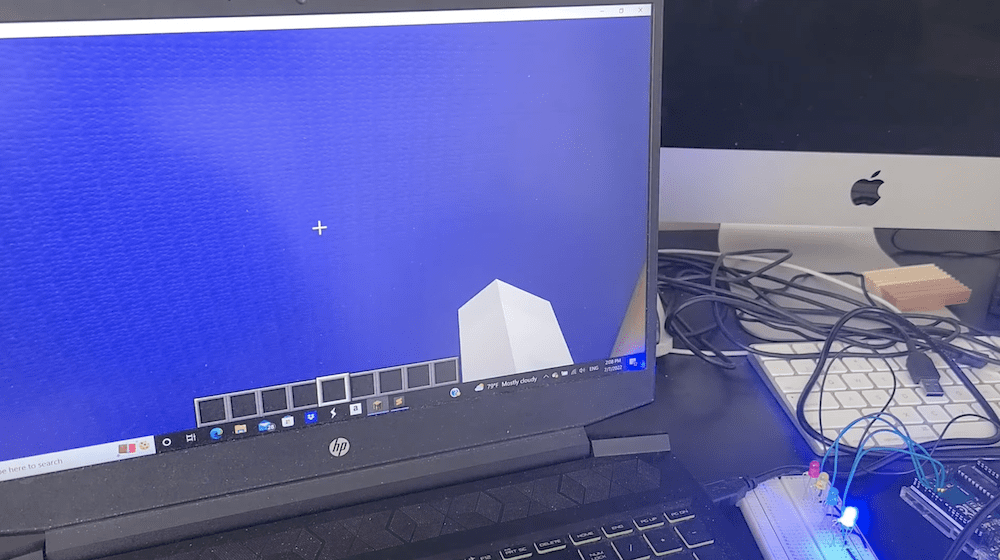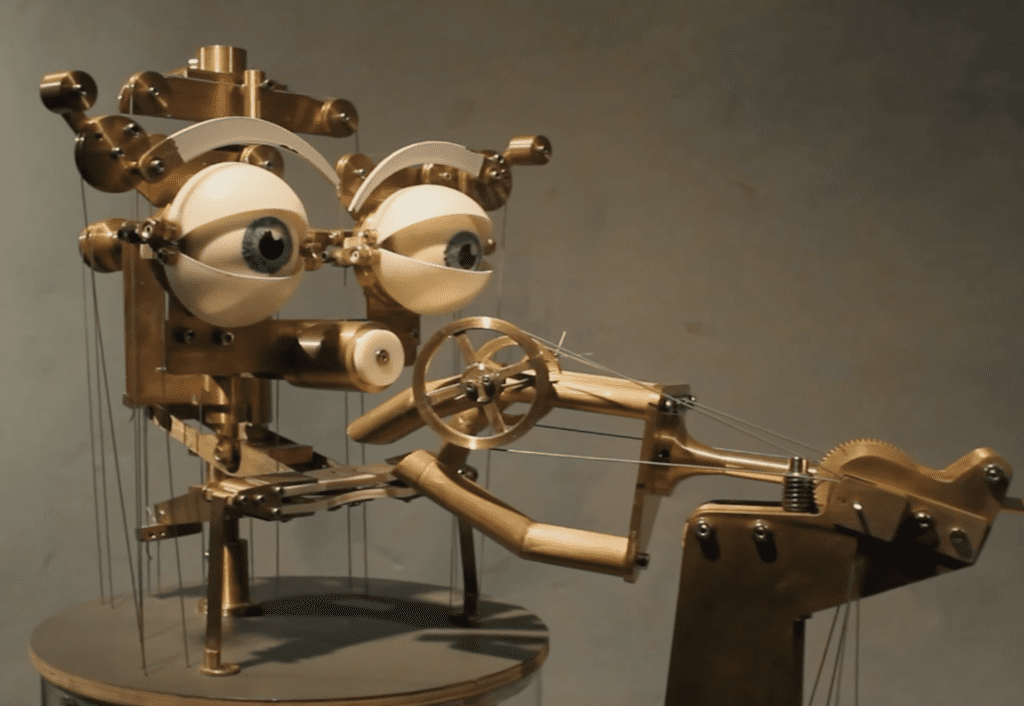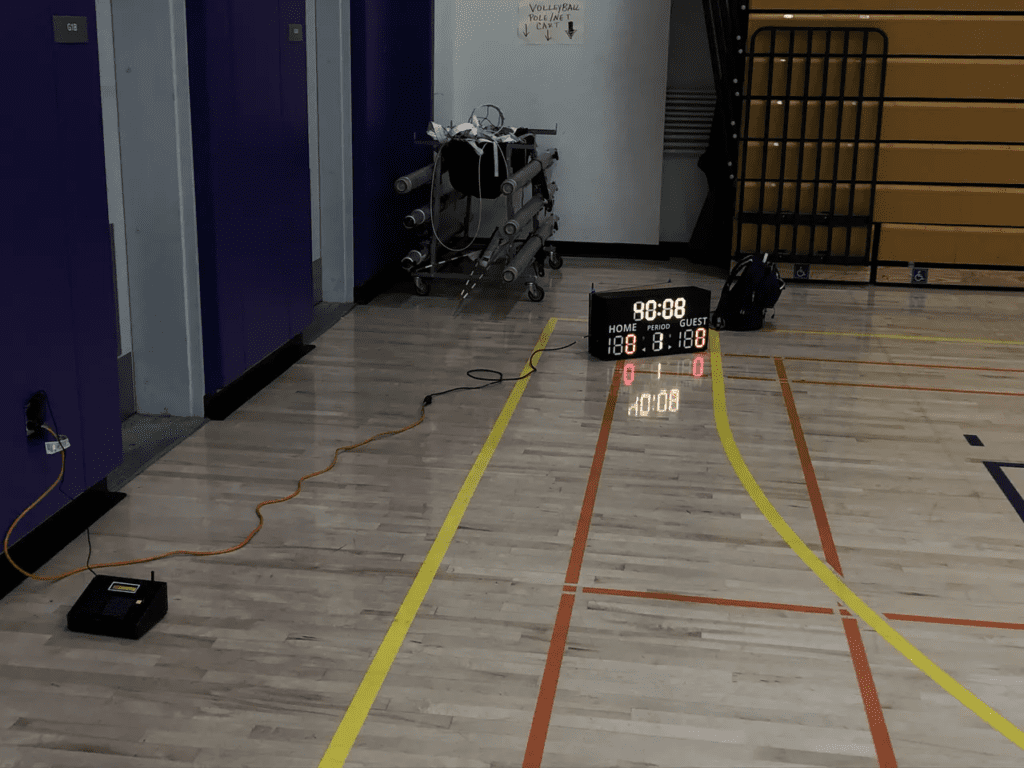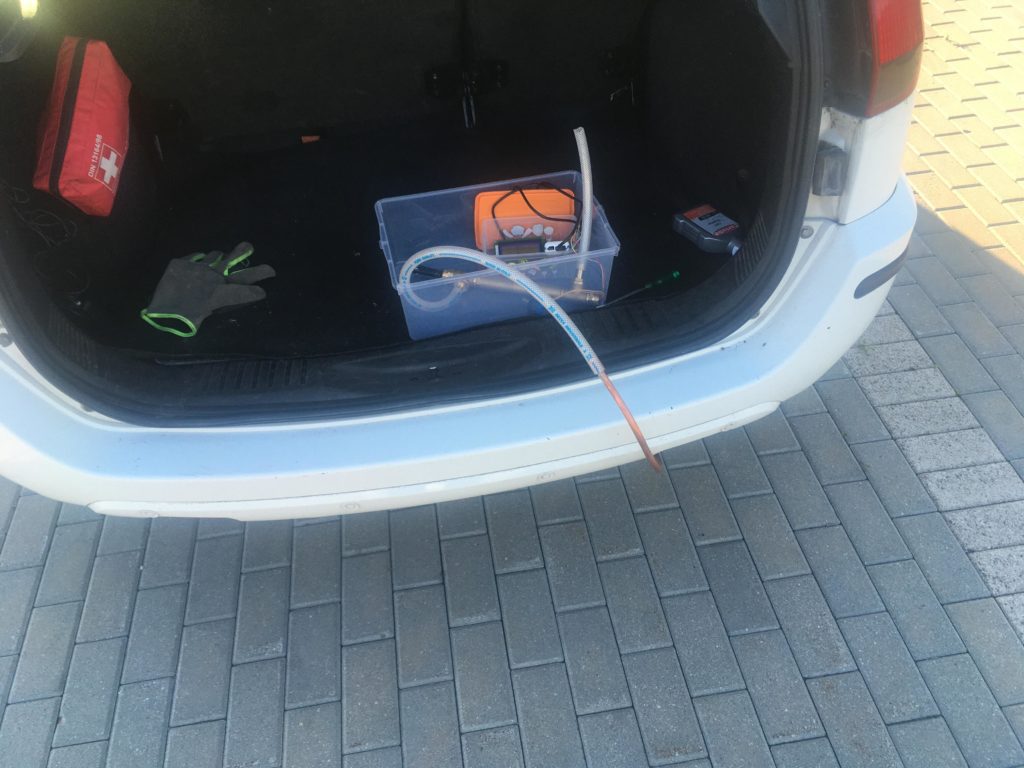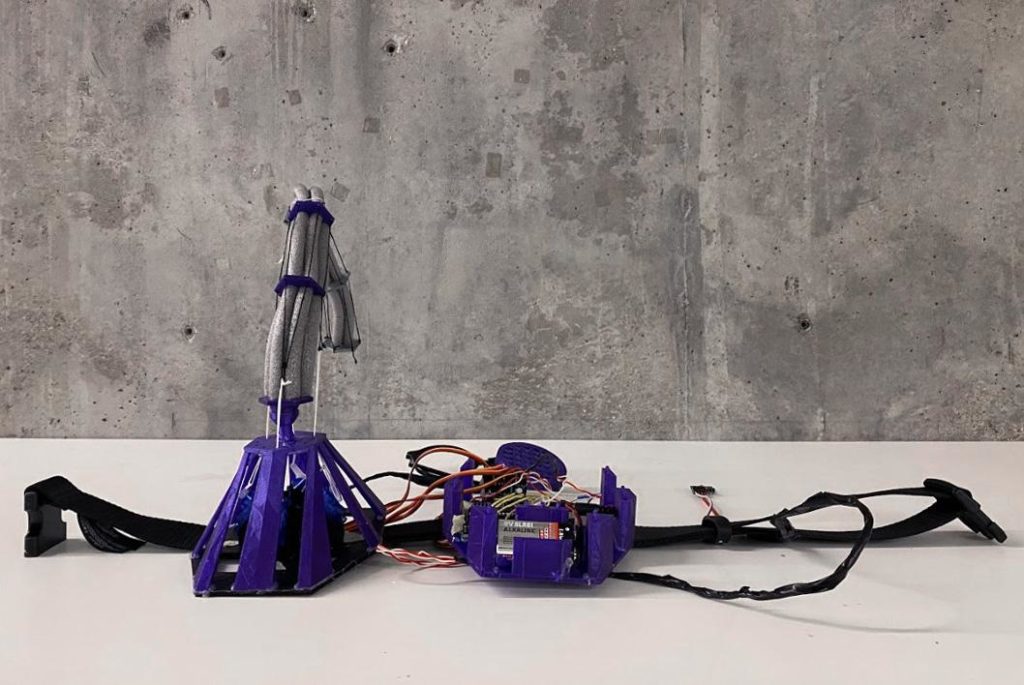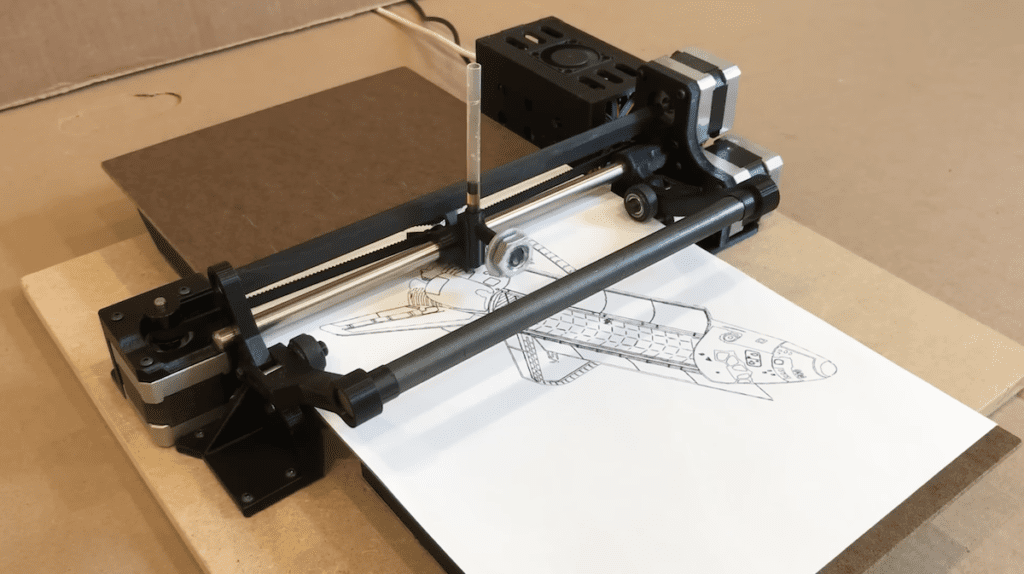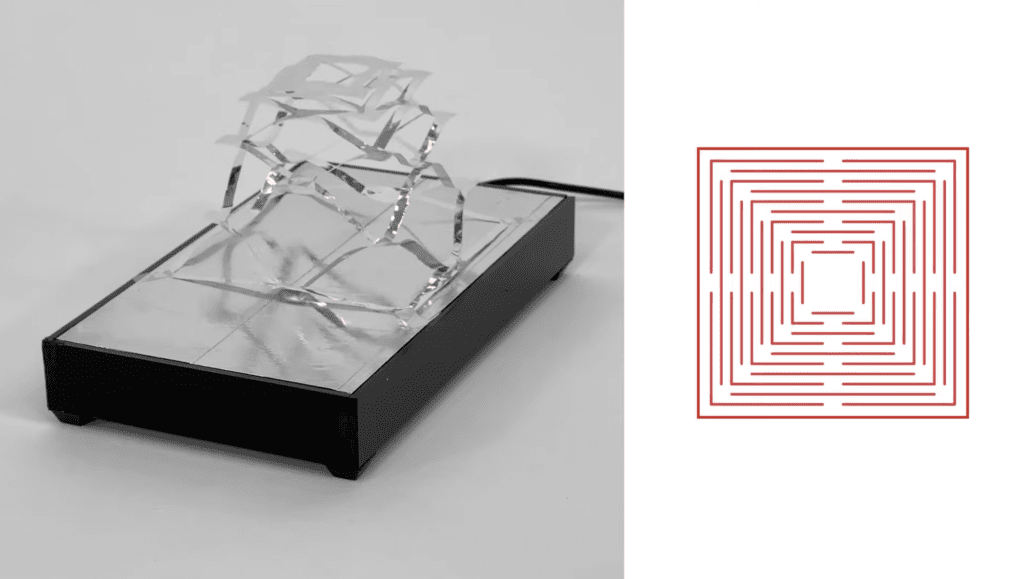Schlagwort: Uno
-

Reducing automotive fuel consumption with an Arduino
Reading Time: 2 minutesArduino Team — August 4th, 2022 Every car sold in the last few decades is equipped with an engine control unit, or ECU for short. Its job is to control nearly every aspect about the vehicle’s performance by reading various sensors and acting upon those inputs accordingly. However, some older rides aren’t…
-

Reading typewriter key presses with an Arduino
Reading Time: 2 minutesArduino Team — August 3rd, 2022 There was a period in the late ‘70s and into the ‘80s when typewriter manufacturers tried to keep up with the tide of the digital age. Personal computers were hitting prices that middle-class families could justify and even the most basic models were far more practical…
-

DIY SawStop saves fingers from shop mishaps
Reading Time: 2 minutesArduino Team — August 1st, 2022 Many power tools have the potential to cause serious harm, but few are as dangerous as table saws. But table saws are also indispensable for woodworking, which means that people are willing to risk their fingers to use them. There is a manufacturer called SawStop that…
-

Equipping a go-kart with an omni wheel for endless drifting
Reading Time: 2 minutesArduino Team — July 21st, 2022 An omni wheel, sometimes referred to by the more specific trade name “Mecanum” wheel, is a unique type of wheel with “tread” made up of several rollers oriented at an angle relative to the wheel’s spin direction. They allow for forward driving like any other wheel,…
-

This coffee machine lets you know when you’ve had too much caffeine
Reading Time: 2 minutesThis coffee machine lets you know when you’ve had too much caffeine Arduino Team — July 21st, 2022 You’ve probably heard that caffeine is a drug. That is true and it is possible to overdose on caffeine and die. Heathline reports that a lethal dose of caffeine is around 10 grams. But…
-

Playing record covers instead of the vinyl
Reading Time: 2 minutesArduino Team — July 21st, 2022 In 2020, for the first time since the ’80s, vinyl records outsold CDs. Digital music — particularly streaming — outpaced both by a wide margin, but the popularity of vinyl records increased while the popularity of CDs decreased. That’s because the analog sound of vinyl adds…
-

A 3D-printed CNC mill made from scratch
Reading Time: 2 minutesArduino Team — July 20th, 2022 CNC machines (both CNC mills and CNC routers) are very useful to makers. With them, you can fabricate custom wood, plastic, or metal parts to the exact dimensions that you define in a CAD (computer-aided design) model. But CNC routers are expensive and CNC mills capable…
-

Touch-sensitive steering for a RatCar
Reading Time: 2 minutesArduino Team — July 19th, 2022 Bears on tricycles aside, animals are not very good at piloting vehicles. But maybe that is because we haven’t given them controls that suit their thumbless bodies. If a vehicle had controls adapted to a particular animal’s anatomy, could they drive? Back in 2019, researchers at…
-

Move this custom robotic arm through a touchscreen interface
Reading Time: 2 minutesArduino Team — July 19th, 2022 Normally, robotic arms are controlled by a GUI running on a host PC, or with some kind of analog system that maps human inputs to various degrees of rotation. However, Instructables user Maurizio Miscio was able to build a custom robotic arm that is completely self-contained…
-

Driving a arduino robot car with nothing but your voice
Reading Time: 2 minutesArduino Team — July 15th, 2022 Traditional control of RC cars and other small vehicles has typically relied on some kind of joystick-based solution, often with one for adjusting direction and the other for speed. But YouTuber James Bruton wanted to do something different: make a rideable go-kart that is entirely driven with…
-

A temperature-sensing Pac-Man/Ghost LED matrix for retro gamers
Reading Time: 2 minutesArduino Team — July 14th, 2022 Instructables users Monserrath Velasco and Santiago Guerra have created an LED matrix that not only features classic Pac-Man characters, but also shows the current ambient temperature by coding it as the Ghost’s color which ranges from blue (cold) to red (hot). The matrix itself was fashioned…
-

Minecraft controls this LED array
Reading Time: 2 minutesArduino Team — July 12th, 2022 A common question asked by new makers is “what is the difference between a microcontroller development board and a single-board computer?” Or, in more common terms, “what is the difference between an Arduino and a Raspberry Pi?” There are many technical differences, but people are really…
-

Brenda is classic automata nightmare fuel
Reading Time: 2 minutesArduino Team — July 5th, 2022 Art is a strange thing. Sometimes its purpose is purely aesthetic. Sometimes it makes a statement. And sometimes it exists to disturb. Kinetic art is no different and some robots fall into this category. Graham Asker’s art elicits pondering on the relationship between humans and robots,…
-

This DIY basketball scoreboard looks and sounds like the real thing
Reading Time: 2 minutesArduino Team — July 3rd, 2022 Inspired by his time as a scorekeeper in elementary school, now-high schooler Collin Wentzien wanted to recreate this setup by building a DIY scoreboard several years ago. His idea involved making a bright display composed of several seven-segment displays that could all be controlled by an external device in order…
-

DIY diesel emissions monitor is a lesson in spectroscopy
Reading Time: 2 minutesArduino Team — June 30th, 2022 Some things, like voltage, are very easy to measure. Other things, like the chemical composition of a compound? Not so much. Emissions from internal combustion engines are one of those things that are hard to measure. But Janis Alnis needed a way to measure his diesel…
-

This project lets you experience life with a cybernetic tail
Reading Time: 2 minutesArduino Team — June 23rd, 2022 Modern humans have forgone their tails in favor of walking upright, and this fact left maker Pengfei Zhang wondering what it would be like to have such an appendage. From this idea, she along with Sarvenaz Sardari and Xi Peng created the Cyber Tail, which integrates embedded…
-

This high-speed Arduino pen plotter creates drawings in mere minutes
Reading Time: 2 minutesArduino Team — June 21st, 2022 Pen plotting projects are everywhere nowadays, with the vast majority using a couple of stepper motors for moving the writing utensil and a servo to raise or lower it. But they are quite slow due to the lack of rigid assembly and because the servo motor…
-

Freddie points to the current temperature on the Mercury Thermometer
Reading Time: 2 minutesArduino Team — June 16th, 2022 Nearly everyone is familiar with the mercury thermometer and how it uses the expansion of the element to display ambient temperatures. But in Instructables member TurboSnail’s latest project, they attempted to turn this concept on its head by making a thermometer that uses the iconic Freddie Mercury to show the…
-

Freddie points to the current temperature on the Mercury Thermometer
Reading Time: 2 minutesArduino Team — June 16th, 2022 Nearly everyone is familiar with the mercury thermometer and how it uses the expansion of the element to display ambient temperatures. But in Instructables member TurboSnail’s latest project, they attempted to turn this concept on its head by making a thermometer that uses the iconic Freddie Mercury to show the…
-

ElectriPop inflates 3D Mylar forms using electrostatic energy
Reading Time: 2 minutesArduino Team — June 14th, 2022 If you’ve ever stuck a balloon to your head, you know that static energy is powerful enough to overcome gravity. It is also possible to produce that energy on demand by running electrical current through some materials, including metalized Mylar sheets. In a recent project from…
-

This DIY driving assistant helps with parking and blindspot monitoring
Reading Time: 2 minutesArduino Team — June 8th, 2022 When it comes to driving a car, one must always be on alert for possible obstacles and other drivers in the next lane over for changing lanes. But because older vehicles that lack built-in blind spot detection or parking sensors would require quite pricey upgrades, Redditor…
